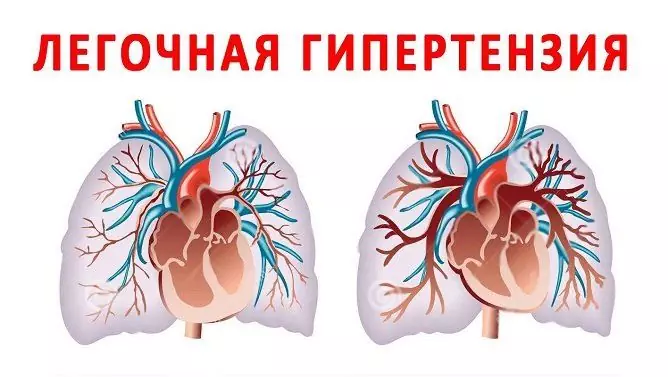- Author Rachel Wainwright [email protected].
- Public 2023-12-15 07:39.
- Last modified 2025-11-02 20:14.
Hydrothorax
The content of the article:
- Causes
- Kinds
- Signs
- Diagnostics
- Treatment
- Consequences and complications
Hydrothorax is a collection of non-inflammatory fluid (transudate) in the pleural space.
The pleural cavity is a slit-like space located between the parietal (adjacent to the chest wall) and visceral (covering the lungs and mediastinal organs) pleura. Normally, the cavity contains several milliliters of pleural fluid, which facilitates the sliding of the sheets during respiratory movements.
With hydrothorax, the amount of fluid in the pleural cavity increases significantly (up to 1 liter or more), which is accompanied by the development of characteristic symptoms.

Accumulation of fluid (transudate) in the pleural cavity with hydrothorax
Causes
The main reason for the accumulation of abnormally large amounts of fluid in the pleural cavity is an increase in hydrostatic pressure in one or both circles of blood circulation. If stagnation forms in the capillary bed, the hydrostatic pressure rises, against the background of which sweating (pushing) of the liquid part of the plasma into the pleural cavity occurs.
Also, hydrothorax can develop due to a decrease in the oncotic pressure of blood plasma due to hypoalbuminemia and the sweating of edematous fluid from the abdominal cavity through the diaphragm with an increase in intra-abdominal pressure.
Diseases and pathological conditions in which hydrothorax may occur:
- congestive heart failure in the systemic circulation in the stage of decompensation;
- pulmonary hypertension;
- kidney disease with nephrotic syndrome (nephrotic syndrome is accompanied by peripheral or generalized edema);
- cirrhosis of the liver, ascites;
- severe hypofunction of the thyroid gland, myxedema;
- volumetric neoplasms in the mediastinum, squeezing large vessels (brachiocephalic and superior vena cava);
- alimentary dystrophy (protein-energy deficiency);
- peritoneal dialysis;
- complication after surgery on the organs of the chest cavity;
- lymphostasis.
Kinds
Depending on the area of distribution, hydrothorax is:
- one-sided (right- or left-sided);
- bilateral;
- total;
- encased.
Classification according to liquid volume:
- minimum - from 50 to 150 ml;
- small - 150-500 ml;
- medium - 500-1500 ml;
- large - more than 1500 ml of fluid in the pleural cavity.
Signs
The intensity of the manifestations of hydrothorax depends on the severity of the underlying disease and the volume of free fluid.
Small amounts of fluid, as a rule, do not have significant clinical signs: the condition may be asymptomatic or with complaints of slight shortness of breath, decreased performance, and fatigue.
Signs of significant fluid accumulation in the pleural cavity:
- heaviness, pressure in the chest;
- respiratory discomfort;
- shortness of breath with light exertion, in severe cases - at rest, with a change in body position;
- feeling short of breath;
- cyanotic staining of the skin and visible mucous membranes.

Feeling short of breath and breathing discomfort - symptoms of hydrothorax
An objective examination of the patient reveals a lag in the affected half of the chest in the act of breathing, smoothing of the intercostal spaces. Percussion determines the zone of muffled or dull sound with an oblique upper border, with auscultation above the area of accumulation of transudate, there are no respiratory sounds. A characteristic feature is the displacement of the border of dullness of the percussion sound when the patient assumes the supine position.
Diagnostics
In order to detect hydrothorax, the following are used:
- percussion and auscultation of the chest;
- X-ray examination in direct and lateral projections;
- computed or magnetic resonance imaging;
- ultrasound procedure;
- diagnostic pleural puncture.

Hydrothorax on X-ray
Laboratory research methods such as a general blood and urine test, a biochemical blood test do not have diagnostic value for confirming hydrothorax. For the purpose of differential diagnosis of the nature of the fluid (transudate, exudate), the Rivalta test is carried out, which allows to confirm or refute the inflammatory nature of the contents of the hydrothorax.
Treatment
Treatment of hydrothorax consists of conservative therapy aimed at treating the underlying disease, and pleural puncture in order to evacuate excess fluid if necessary.
Groups of drugs for the treatment of major diseases:
- cardiac glycosides;
- diuretics;
- phosphodiesterase inhibitors;
- peripheral vasodilators;
- ACE inhibitors, sartans.

In order to evacuate the transudate with hydrothorax, pleural puncture is performed
Pleural puncture is a puncture of the chest wall and the parietal pleural layer, followed by evacuation of the transudate.
Consequences and complications
Complications of hydrothorax can be:
- acute respiratory failure;
- infection of the contents of the hydrothorax;
- empyema of the pleura.

Olesya Smolnyakova Therapy, clinical pharmacology and pharmacotherapy About the author
Education: higher, 2004 (GOU VPO "Kursk State Medical University"), specialty "General Medicine", qualification "Doctor". 2008-2012 - Postgraduate student of the Department of Clinical Pharmacology, KSMU, Candidate of Medical Sciences (2013, specialty "Pharmacology, Clinical Pharmacology"). 2014-2015 - professional retraining, specialty "Management in education", FSBEI HPE "KSU".
The information is generalized and provided for informational purposes only. At the first sign of illness, see your doctor. Self-medication is hazardous to health!






